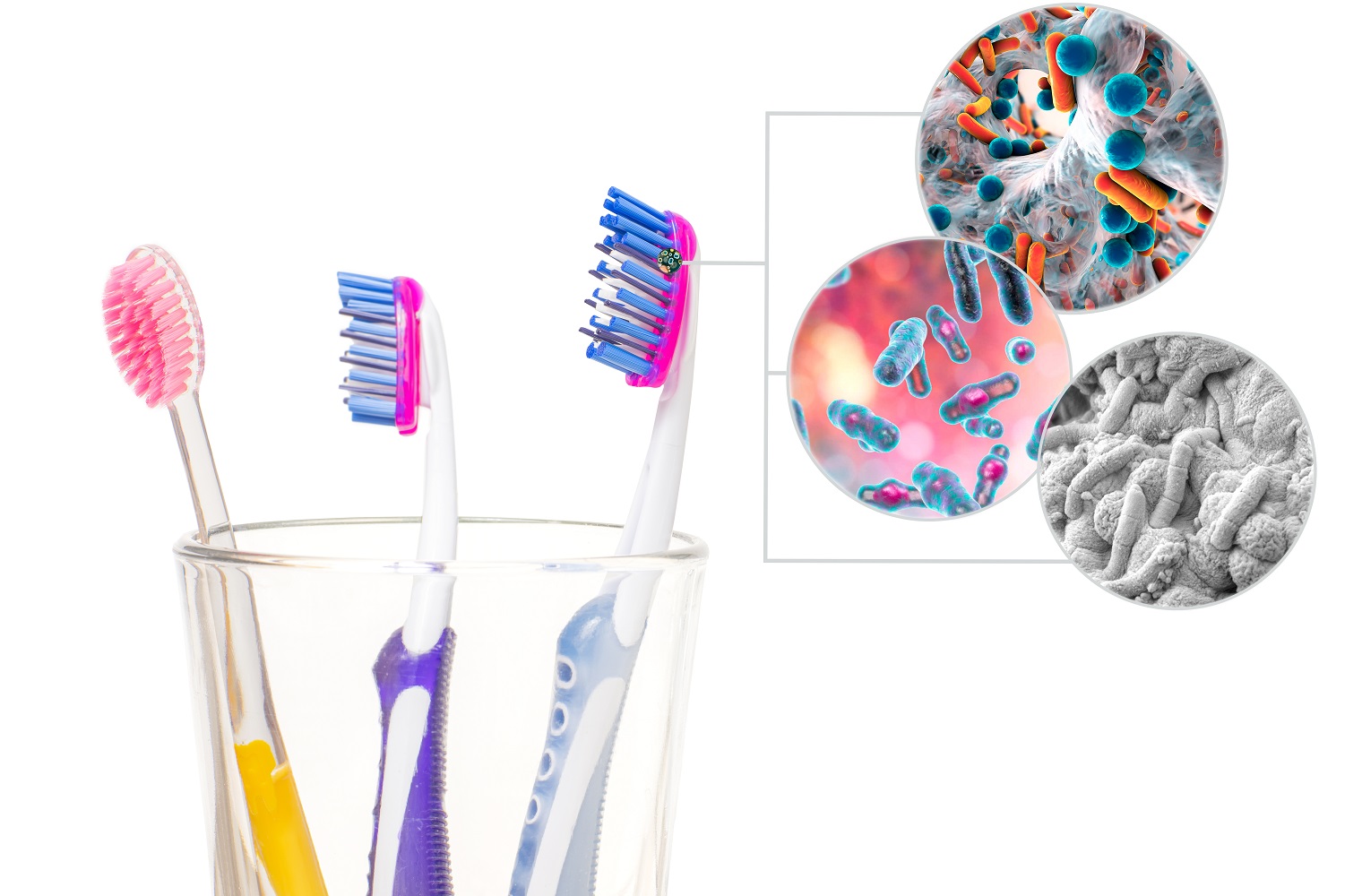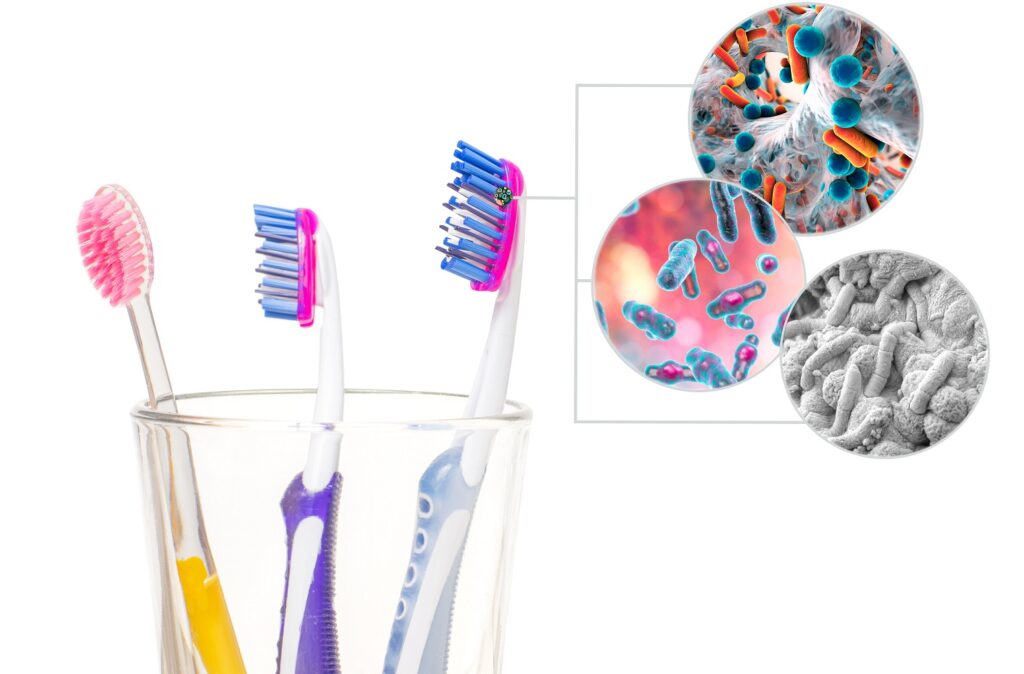
16 Aug How Long Do Germs Live on Your Toothbrush?

When we talk about the millions of germs that live on a toothbrush, let’s first emphasize that germs are all around us, in our mouths, homes, cars, and public spaces. Talking about toothbrush germs is not intended to cause panic but to create awareness for how to use your toothbrush, store it, and replace it.
Stick to A Daily Brushing Routine
There are over 700 distinct species of bacteria living in our mouths. In addition to naturally occurring bacteria, we expose our mouths to germs from eating, drinking, talking, kissing, smoking, and even yawning. Establish a dental hygiene routine that includes brushing, flossing, and rinsing, with twice-annual checkups with the dentist. Brush every day while incorporating these healthy habits for using your toothbrush.
A Good Clean Rinse
After using your toothbrush, run it under tap water for a good cleaning. Store in an upright position and let it air-dry. Clean toothbrush holders regularly. While some reports support sterilizing a toothbrush with 3 percent hydrogen peroxide or mouthwash to decrease bacteria, both the CDC and ADA state there is insufficient data to support this recommendation. Storing more than one toothbrush in a solution may also result in cross-contamination. Ultimately tap water and open-air is the best method.
To Cover or Not to Cover
You may think that storing your toothbrush in an enclosed holder will protect it from germs. Placing a damp toothbrush in an enclosed container promotes microbial growth. Alternately, placing a toothbrush in the dishwasher or microwave to ‘sterilize’ is not recommended as high heat can damage the bristles. If you want to store your toothbrush, look for a toothbrush sanitizer device that has been approved by the Food and Drug Administration (FDA).
Don’t Flush Where You Brush
Toothbrushes have been shown to hold bacteria including toilet plume. Toilet plume is the dispersion of microscopic particles in the air after flushing. While this may sound gross, there is little scientific evidence that bacteria on a toothbrush can make people ill. As a matter of good oral hygiene, store your toothbrush on the opposite side of the room from the toilet. Never store your toothbrush directly on the top of the toilet tank or shower ledge near the toilet.
Sharing is Not Always Good
It may seem okay to share a toothbrush especially if the other person is a spouse or family member. Our body’s bacteria is unique to us just as other person’s bacteria are unique to them. Sharing a toothbrush can introduce foreign bacteria into our bodies that increase the risk of illness. Sharing a toothbrush also exposes our mouth to periodontal disease and other blood-borne illnesses the other person may carry. If you are away from home and have forgotten your toothbrush, it’s better to skip brushing rather than share.
Use and Replace
The best way to keep your toothbrush clean is to replace it every 3-4 months or when the bristles become frayed. In the event of illness such as cold or flu, a toothbrush should be replaced immediately following the illness, even if the brush was new. Germs and viruses can live on the toothbrush head for weeks and holding onto it after illness increases the reintroduction of that bacteria into your mouth.
There are many products in our home that we regularly replace: sponges, batteries, furnace filters, and expired foods. Add your toothbrush to the list to ensure the health of your mouth. Maintain twice-annual visits to the dentist to ensure the health of your mouth both above and below the gumline. Schedule an appointment today at (281) 265-3567 or schedule an appointment online.

Dr. Dragana Angelova
We Love to See You Smile

